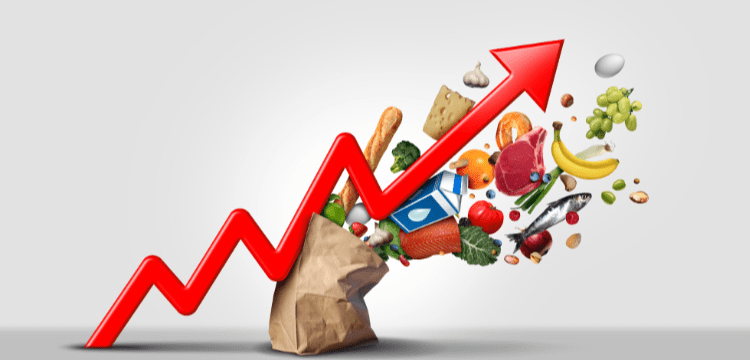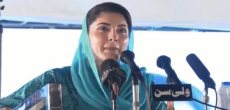[vc_row][vc_column][vc_column_text dp_text_size=”size-4″]ISLAMABAD: As the government drastically increased energy and fuel prices, together with the negative effects of currency devaluation and a halt to imports, inflation in Pakistan soared to a half-century high of 31.5%, making it the 17th most expensive country in the world.
Figures made public by the Pakistan Bureau of Statistics (PBS) on Wednesday indicated that the nation was rapidly moving towards hyperinflation, with at least four categories of consumer goods already experiencing an annual price increase of approximately 50%.
A simple reading of the inflation bulletin highlighted how unpleasant life had become for the average Pakistani, as virtually any consumer commodity had not seen a recent increase in price.
A day before the Monetary Policy Committee’s emergency meeting, the PBS made its readings public.
The discussion at the huddle focused on the International Monetary Fund’s (IMF) recommendations to increase interest rates.
One of the four unresolved concerns impeding a staff-level agreement between Pakistan and the IMF is raising interest rates.
According to the PBS, the Consumer Price Index (CPI), a measure of inflation, increased 31.5% in February compared to the same period the previous year, exceeding the finance ministry’s prediction of 30%.
Since the index was reported at 32.8% in 1973–74, this was the highest reading.
Pakistan’s inflation rate was the 17th highest in the world and was projected to stay high due to the devaluation of the currency, increases in power and gas prices, and the implementation of additional taxes to comply with IMF demands.
Over the previous month, the rupee’s value has fallen by 16.5%. The IMF nonetheless maintains that the government is somehow responsible for preventing further depreciation of the local currency.
Also Read: Interbank rupee declines by almost Rs19 against Us dollar due to IMF delays.
By raising interest rates alone, the issues that are causing the increase in inflation cannot be addressed. This is because the government’s and the IMF’s policy decisions have resulted in growing inflation.
The IMF’s argument for releasing the central bank from the supervision of the finance minister has been undermined by its order to Pakistani authorities to advance the date of the Monetary Policy Committee meeting.
Core inflation rose in February to 17.1% in urban areas and 21.5% in rural regions. Core inflation was determined after eliminating the volatile energy and food prices.
Core inflation remained higher than the central bank’s policy rate, which was revised upward to 17%, showing that there were still inflationary factors at play.
There are disagreements between Pakistan and the IMF over how to define the real positive interest rate yardstick.
The government prefers to evaluate it in light of core inflation, which can reach up to 21.5%, while the IMF bases its assessment on headline inflation, which is 31.5%.
It was a rare month when, with the exception of one group—communication—all inflation rates were in double digits.
Pakistan is currently experiencing hyperinflation, which occurs when prices are out of control and have increased by 50%.
In February, the inflation rate for the transportation, beverage, and cigarette groups was 50% more than it was during the same time last year.
The inflation rate was almost 48% for both services related to entertainment and culture as well as perishable food.
According to the PBS, the inflation rate skyrocketed in rural areas, where it was reported at 35.6%, while it increased to 28.8% in cities. Food inflation rates significantly increased, primarily as a result of broken supply networks and lax controls.
According to PBS data, food inflation jumped dramatically last month, reaching 42% in cities and a sharp increase of 47% in rural areas.
Even the provision of basic food supplies cannot be guaranteed by either the federal or provincial governments.
Prices are growing at a time when both poverty and unemployment are on the rise and the economy has drastically slowed down.
The majority of consumer products’ costs remained out of reach for most people, while rural areas, where income levels were already low, saw a significant increase.
Prices for the food group increased by 45% in February compared to the same month last year. Both the non-perishable and perishable food items were more plentiful.
The spike occurred before Ramadan, signalling that costs will rise even more in the upcoming months. This is due to the customary hoarding and profit-making throughout the holy month.
When compared to the same month a year prior, the cost of onions jumped by 417% in urban areas and by 517% in rural areas in February. The cost of chicken then increased by almost 100%.
Wheat, a staple grain for the vast majority of Pakistanis, is now out of their grasp.
According to the PBS, its rates soared by over 82% while the price of flour rose by a similar 56%. Another common commodity, rice, saw a 78% increase in price last month.
According to the PBS, the price of pulses increased by over 60% last month compared to a year prior, while the price of vegetable ghee and cooking oil increased by almost 51%.
Due to the high taxes placed on these products, the cost of alcohol and tobacco increased by 49%.
Due to the approximately two-third increase in gasoline costs from a year ago, the prices for the transport group climbed by more than 50% last month.
The non-food inflation rate grew to 20.8% in urban areas and 25.3% in rural ones.
Housing, water, electricity, and gas fuel prices all increased by 13.5%.
The government raised gas prices by 63%, according to the inflation bulletin.
Education has become unaffordable as textbook prices increased by 74% from a year earlier.
The data showed that the average inflation rate for the period of July to February of the current fiscal year was 26.2%, more than double the stated target of 11.5% for the current fiscal year set before the floods. In villages, the average inflation rate was close to 30%.[/vc_column_text][/vc_column][/vc_row]











